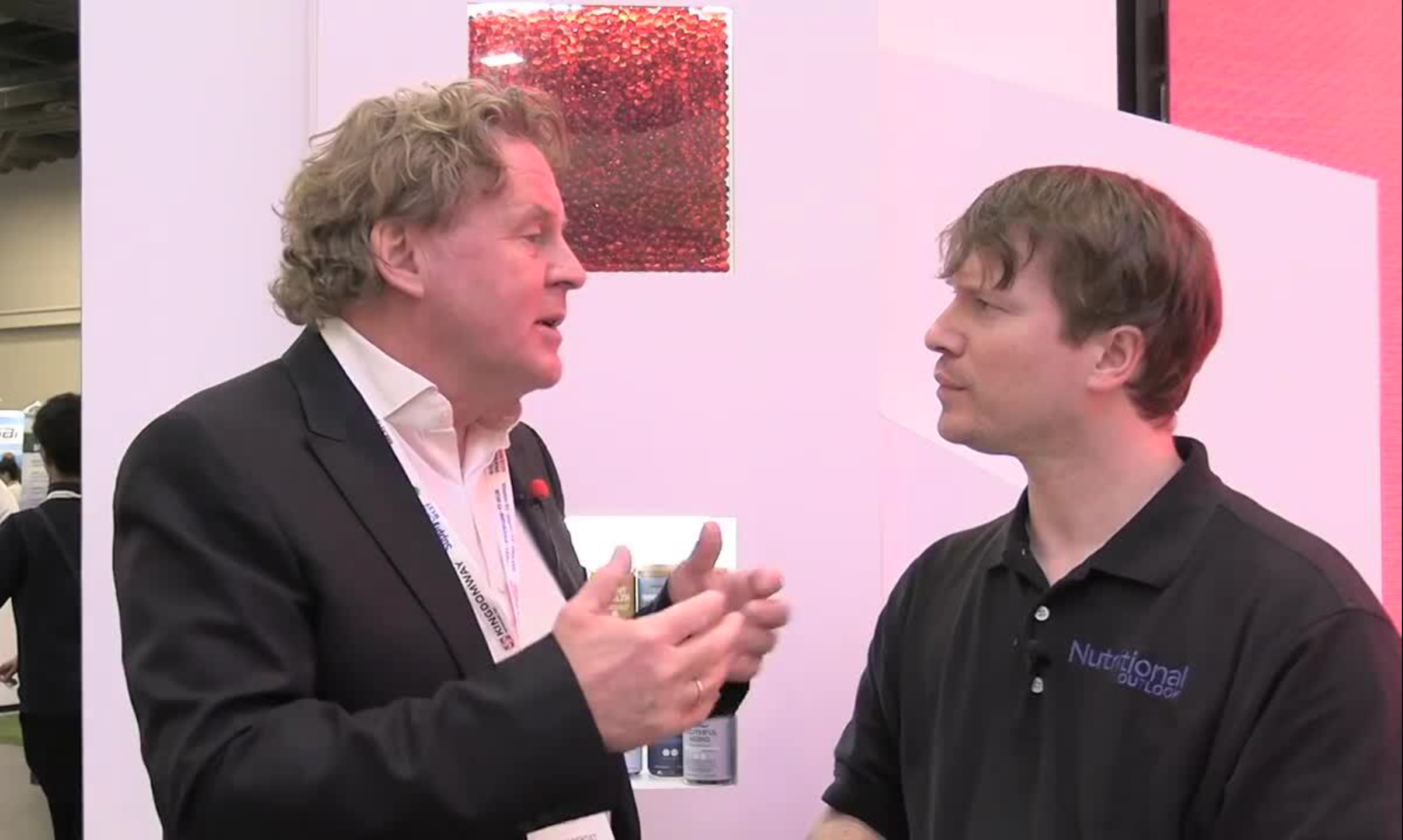Recent study shows that micellar formulation of astaxanthin has better bioavailability than native astaxanthin
Nutritional Outlook sat down with Aquanova at the recent SupplySide West 2024 to discuss its micellar astaxanthin ingredient.
Image | adobe.stock/SWRSC

A recently published study1 found that a novel astaxanthin preparation based on a micellar solubilization technology from Aquanova NA Corp. was more bioavailable than a native form of astaxanthin. Danny Hofeditz, the company’s director of quality & product innovation explained to Nutritional Outlook at this year’s SupplySide West, that astaxanthin is a highly lipophilic compound with low oral bioavailability, which makes it a high-cost ingredient.
In the study, researchers gave 12 volunteers the NovaSOL 400 mg capsule and native astaxanthin in a 400 mg capsule separated by a one week washout period between each product. Blood samples were collected at hourly intervals for the first 12 hours, then at 24, 48, and 72 hours after administration. Results showed that the micellar astaxanthin formulation has a maximum concentration of 7.21 µg/ml after 3.67 hours compared to 3.86 µg/ml after 8.5 hours for the native astaxanthin, meaning that the micellar formulation reached a higher concentration in less time, which could translate to faster potential therapeutic efficacy.
Aquanova specializes in micellar formulations. According to Hofeditz, the company’s micelles range from 5 to 30 nanometers in size, but he emphasizes that the micelles are not engineered nanomaterials (ENM). This is important for regulatory purposes. As Frank Behman, the company’s CEO, explains, the company is classified non-ENM by the European Food Safety Authority (EFSA), which uses a specific methodology to verify that products are not ENM.
In terms of end products, capsules are the most common way to consumer liposomes. Behman says that while micellar formats are water soluble and fat soluble, making them suitable for dilution in media, “from a commercial perspective, we regard capsules as being the perfect format because of stability, and ease of use. You just ship the material to the encapsulator, it will be filled into soft gels and the caps easily, and that has been proven for millions and millions of capsules, while beverages typically you have like a lead time 36 months.”
Aquanova is also dedicated to validating its ingredients and transparency. “Our company is highly invested in generating scientific data that we are also frequently publishing,” said Hofeditz. “All of the data that we generate is freely available. So, it's all under public domain and has been published in peer reviewed journals."
On top of transparency, Behman says the company endeavors to provide customers suppor throughout the product lifecycle. That is why the German company founded Aquanova North America, “to enforce its commitment to the U.S. market.”
Reference
- Khayyak, M.T.; Teaima, M.H.; Marzouk, H.M.; El-Hazek, R.M.; Behnam, F.; Behnam, D. Comparative Pharmacokinetic Study of Standard Astaxanthin and its Micellar Formulation in Healthy Male Volunteers. European Journal of Drug Metabolism and Pharmacokinetics. 2024. 49, 467-475. DOI: 10.1007/s13318-024-00898-0
HHS announces restructuring plans to consolidate divisions and downsize workforce
Published: March 27th 2025 | Updated: March 27th 2025According to the announcement, the restructuring will save taxpayers $1.8 billion per year by reducing the workforce by 10,000 full-time employees and consolidating the department’s 28 divisions into 15 new divisions.











